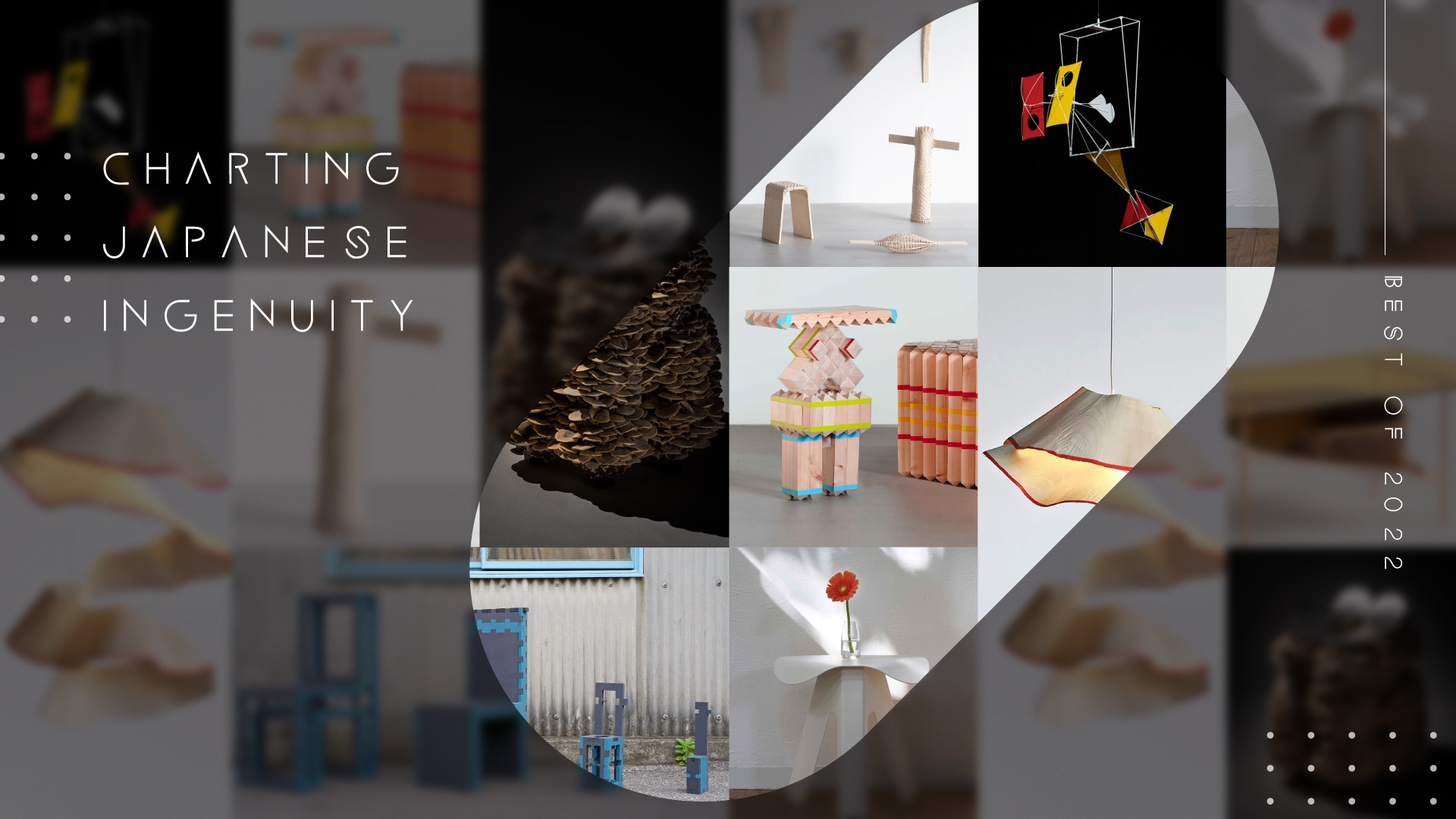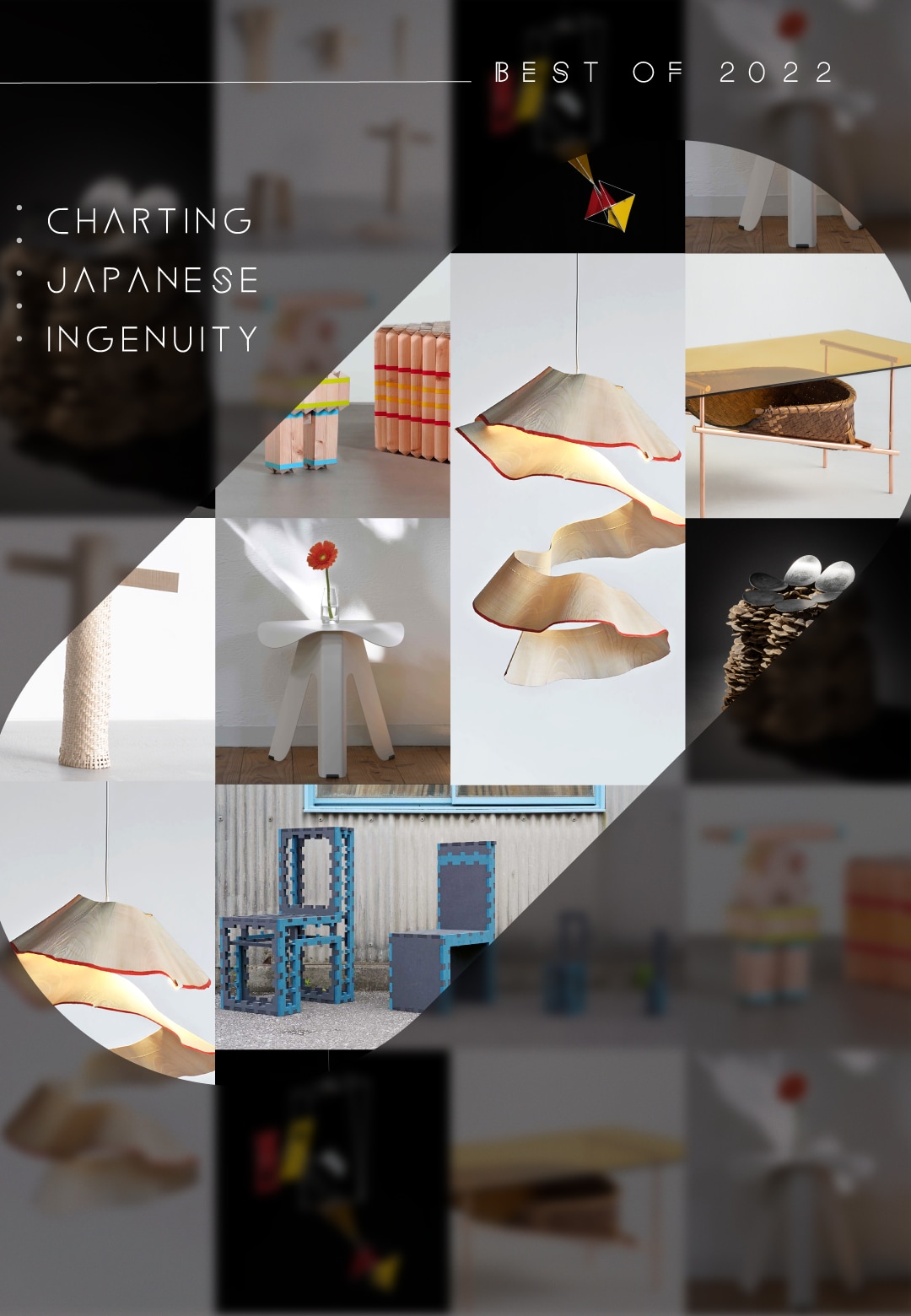Japanese design is well-known for its tenacity in reshaping lives and shelters from ruins, and designers for being forward-thinking in their learning techniques and experiments. A combination of both these abilities, writ in the DNA of Japan, enables the creation of innovations that confound and amaze people overseas. Scanning through their inventions, from the bullet trains of Japan to their traditional wooden houses and Zen gardens, one can surmise that technology and tradition go hand in hand in the land of the rising sun. This, perhaps, is the reason why Japanese design, Japanese art, and Japanese architecture appeal to people, across time, geographies, and cultures.
Delving deeper into the creations that emerge from the East-Asian country, STIR enlists the Best of 2022 in the realm of product design and furniture design.
Deku collection by Takuto Ohta
Just like the miniature LEGO blocks that children arrange and assemble—to build carts, houses, castles, and boats—as kids, Japanese designer and architect Takuto Ohta’s Deku blocks can be configured to construct furniture and homeware objects in standard sizes. The edges of these elemental pieces, cut at 45 degrees, snugly rest against each other, while also standing erect on the ground. Since they are easy to assemble and disassemble, the Deku blocks invite people to play and experiment with them, creating, in the process, geometric objects that fulfill functional requirements and serve decorative purposes. The wooden furniture design is further enhanced by the addition of brightly coloured masking tape along borders that separate the longitudinal blocks from the teeth-shaped edges.
Suite Furniture by Hisakazu Shimizu
Product designer Hisakazu Shimizu’s Suite collection, created in collaboration with Japanese manufacturer Nippon Benex, is the result of several experiments done on sheet metal. The stools and tables that make up the collection help explore the potential of sheet metal, which is usually associated with stiffness. However, the forms of the furniture pieces created by Hisakazu Shimizu, of industrial design practise S&O, are characterised by soft edges and organic geometries. Small in size and subtly coloured, the table and stool by the Japanese creative can alternatively be used as tables, stools, and stands and occupy spaces that are both formal and informal. The material used to craft the pieces ensures that the Suite collection can sit outdoors without any worry of getting damaged or soiled. Built by curving 2 mm thick steel plates, the objects are light, both visually and in their weight.
Still Life collection by Ryosuke Harashima
An archaic Japanese belief elevates the status of old tools to animate beings that have a soul. Expanding on this narrative, Japanese designer Ryosuke Harashima decided to collaborate with seemingly sentient old harvesting tools that “have developed a stronger existence because of the passage of time,” as the designer explains. Harashima’s creations reflect an identity communicated by the words “still” and “life”, and are hence called Still Life. In using tools that facilitate the process of harvesting, the designer also pays homage to the simple countryside life in Japan, where good harvests merit jubilant celebration. The two latest additions to the furniture collection, namely Miss you, Shanghai blue and A day in the harvest are unique table designs that offer a fresh perspective on product design—one wrought with emotions over pragmatic insertions.
While Miss you, Shanghai blue is the transformation of an old bucket of water into a storage unit placed beneath the table's glass top, A day in the harvest integrates a winnowing basket—used for sifting rice from the chaff—as part of the table. The tinted blue glass in Miss you, Shanghai blue depicts both the clear blue sky of Shanghai as well as the water picked up by traditional water-carrying buckets.
Twins-MDF Chairs by Yuji Tanabe
An iteration of the Twins-Steel chairs—created by architect and industrial designer Yuji Tanabe in 2004—the Twins-MDF chairs, also designed by Tanabe, utilise wood offcuts by integrating them within chairs. This not only reduces the waste left behind during furniture construction in the form of small, non-usable bits of wood but also helps shape a unique design. The idea of positioning entities like jigsaw puzzles against each other first rose in the Tokyo-based designer’s mind in 2004. While the original chairs used stainless steel as its primary material, the latest version uses the updated design scheme to build wooden furniture. Tanabe positions the masses and voids of medium-density fiberboard trimmings in such a way that no part of the MDF boards gets wasted. They can be affixed to each other without the use of nails or drills and can be dismantled in a similar fashion.
Sharpener by Nanako Kume
Imagine the pencil shavings—sometimes hastily discarded as waste and at other times carefully collected in boxes with the intention of whipping out crafty objects from them—being blown up into their magnified counterparts and used to fashion usable lighting design. Japanese designer Nanako Kume’s pendant light Sharpener is exactly that. As a kid, Kume observed the little concentric wood sheets coming out from his sharpener and was often inspired to create something. However, after failing to preserve them as something decorative or functional, the designer would have to throw them away. The lamps, crafted from wood shavings that are larger in size than the average pencil shaving, are an attempt by the designer to preserve the beauty of these discarded entities. In an attempt to retain the original structure of the shavings, the lampshades of the Sharpener pendant lights are released from large-scale sharpeners that mimic the construction and function of their minuscule counterparts. The result is an array of shavings of different sizes and colours, depending on the wood that was sharpened.
Plywood sculptures by Sato Nobuaki
Plywood sheets usually cover floors, walls, ceilings, doors, and mobile furnishings such as cabinets and cupboards. Since their presence is more dominant as a varnishing material, one may find it hard to visualise sculptures and usable furniture knit using plywood strands. Japan-based product designer Sato Nobuaki, however, visually showcases, through his latest plywood collection, the art of weaving wooden strands to build delicate objects. The inspiration behind his animated creations rests in folk art. They mimic the spirited personalities of puppets and the expert weave of plywood strands in basketry. The gently woven stools, wall sculptures, and floor sculptures also serve as an antithesis to mass-manufacturing and industrial modes of production, as well as an ode to Charles and Ray Eames, who extensively experimented with the material.
Fungi Stool by Satoshi Itasaka
Satoshi Itasaka of Japanese design studio h220430 recently built a stool using one of the most unconventional materials—mushrooms. Held together by a stainless steel and wood structure, the stool aims to fulfill two purposes. It serves as a unique experiment where an alive fungi is woven into a structure that can people and hence, offers a glimpse into the possibilities of sustainable design. On the other hand, it also draws attention to the role of fungi and bacteria in our ecosystem. The last few years have witnessed the blatant killing of bacteria across the globe. However, Itasaka wishes for audience to learn more about the importance of bacteria and fungi in our lives, as well as how to deal with them, rather than a mindless and endless annihilation of these organisms.
Sculpting with Wind series by Susumu Shingu
Japanese kinetic artist and sculptor Susumu Shingu configured canvases to dance and move in the wind. The series of kinetic sculptures is aptly called Sculpting with Wind. The sculptures, with their transitioning visages and personas, serve as metaphors for our transient and ever-changing situation. When stationed outdoors, the large-scale installations serve as reminders of the power that invisible entities such as wind, water, gravity, and light possess. The collection also comprises a series of interior kinetic sculptures that respond to the energy indoors.






 Sign in with email
Sign in with email










What do you think?